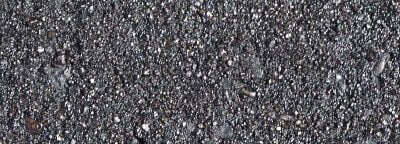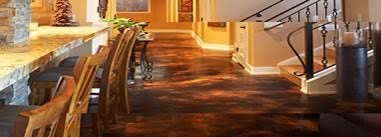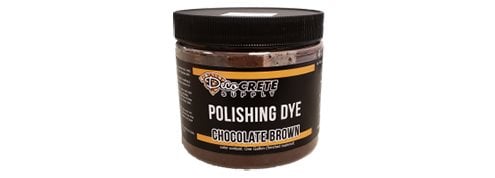- Colored Concrete Home
- Concrete Color Charts
- Ways to Color Concrete
- Concrete stains
- Integral Color
- Dry-Shake Color Hardener
- Concrete Dyes
- Concrete Paint
- Comparison Chart: Concrete Coloring Products
- Design Ideas for Colored Concrete
- Which Color Scheme is Right for Your Home?
- Creating color and texture with Stamped Concrete
- Adding Interest with Exposed Aggregate
- Creating Excitement with Color: Endless Possibilities with Polymer Stain
- Related Information:
- Problems with colored concrete: Common problems, why they occur, and how to avoid or fix them
- Guide to Buying Concrete Stains and Dyes
- Lea este artículo en español
Concrete Dye vs. Stain: What Are the Differences?
I hear a lot about using dyes on concrete. What are they, and how do they differ from chemical stains?
Answer:Concrete dyes are the latest buzz in the decorative concrete community. Their ease of use, extensive palette, and vibrancy of color (which can be more intense than chemical stains) are creating a wave of popularity that is gaining momentum.
Buy Concrete Stains, or Concrete Dyes
Unlike concrete stains, which react chemically with the calcium hydroxide in concrete, dyes are nonreactive and impart color by penetrating concrete or other porous cementitious surfaces. Dyes are much smaller in particle size than chemical stains or acrylic stains, thus allowing for easier penetration and color saturation while leaving less residue on the surface. A good analogy for comparing the color intensity and penetration of dyes to stains is that you can fit a lot more marbles than bowling balls into the same size container. The small dye particles fill the pores of the concrete and are very hard to remove, making dyes nearly as permanent as stains. Because there is virtually no residue, minimal cleanup is required, greatly speeding the application process.
Dyes are available in water- or solvent-based formulations and produce looks ranging from monotone to translucent, depending on how they are applied. Water-based dyes typically produce more marbling and variegation (similar to the look of a chemical stain), while solvent-based dyes tend to be more monotone and uniform in color. Some manufacturers' water- and solvent-based dyes can be combined to produce special color effects. The downside to dyes is that they penetrate very fast, leaving little room for error during application. Also, they are not UV stable, so most manufacturers recommend indoor use only.
I encourage you to try dyes and discover the unique effects you can achieve with this new coloring technology.
To see how dyes and stains stack up against other options, check out this comparison chart of concrete coloring products.
 ColorJuice
Achieve vibrant color for polished concrete.
ColorJuice
Achieve vibrant color for polished concrete.
 Stain-Crete by Increte
9 standard colors. Useful for old or new concrete.
Stain-Crete by Increte
9 standard colors. Useful for old or new concrete.
 Kolour Dye
Great for interior polished concrete.
Kolour Dye
Great for interior polished concrete.
 Stone Tone Stain
10 color options. Resistant to chipping and fading.
Stone Tone Stain
10 color options. Resistant to chipping and fading.
 Polishing Dye
A translucent dye, for Polished Concrete
Polishing Dye
A translucent dye, for Polished Concrete
 Concrete Acid Stain
BRICKFORM Blush-Tone Acid Stain available in 10 standard colors
Concrete Acid Stain
BRICKFORM Blush-Tone Acid Stain available in 10 standard colors
Author Chris Sullivan, ConcreteNetwork.com technical expert and vice president of sales and marketing for ChemSystems Inc.
Return to How to Fix Colored Concrete




